Been busily filling your requests for copies of my old outdated business cards as per our earlier offer, and it’s been fun to see your notes or little bit of stuff included in the requests. None of it was necessary, but it is encouraging to get the sense that this Newsletter is actually reaching people every week. It takes such a long time to write one of these things up every week, no matter how much I attempt to shorten and streamline the process, so it’s encouraging to know that there’s somebody there hungry for all of this barely-content every Sunday morning.
In the interests of attempting to keep things streamlined, we’ll go right into reader questions in a second. But first, I wanted to throw in a plug once more for my brother’s band, MIGHTY JOE CASTRO AND THE GRAVAMEN. They’ve just released a full music video for their new single, which can be watched here. It’s good stuff—and filmed in the midst of tornado warnings.
To begin our Q & A portion, let’s begin with a missive from my old boss Bob Budiansky
"Strip-mining." I like that. I always looked at what I did as Spidey EIC as looking for every publishing opportunity to expand upon the Spidey Universe, but "strip-mining" is a very colorful, succinct way of putting it. Since Marvel gave me that sudden exit, I'll leave it to you and other Marvel historians to decide if I left any toxic waste pits behind.
I think you’re right, Bob, in that you were given a very difficult fiscal goal to accomplish and you were dedicated to carrying out and accomplishing that mission. I do feel, and did then as well, that because the mission was so daunting, you threw absolutely everything at it—which produced some value in the short term but sometimes at the cost of the long. I don’t really fault you for it—you were the only one among the five EICs who actually got the job done, and the fact that you were relieved afterwards is a travesty of justice, though all too typical for corporate America. And certainly, there were things that you pushed for during that period that I fought against that have come to happen successfully in the years thereafter. I don’t know if you remember the point at which you were stumping for the theme to that year’s assorted Spidey Annuals to be “The Many Worlds of Spider-Man” in which the wall-crawler wound up going to other universes and encountering other divergent Spider-Men. I battled you on that like crazy, that wasn’t a Spider-Man story to me at all. Your counter was that the X-Men could do it, so why not Spider-Man, but that wasn’t convincing to me, and ultimately I prevailed. Cut to today, and Spider-Verse is a huge mainstream success, both in publishing and in movies. It’s not exactly the same thing, but it’s not all that far removed either. So maybe you were right and I was wrong in that instance, and time has proven you out.
Mortimer Q. Forbush
You've answered several times over about the roles of various tiers of editors — but I am wondering to what degree the upper roles like President, Chief Creative Officer, Publisher, (and other bigwigs that I wouldn't even know to ask about) has on the stories that make it to the readership. I know Bill Jemas could be super hands-on, but if he wasn't representative of that position's typical role, what is?
For instance, I was surprised to learn that an unenthusiastic assessment from the sales department could axe a book before it even launched (am I remembering that correctly?) Similarly, — and I know you can't speak out of school — but as someone hoping to get some Luke Cage stories all through these last few years where a bulletproof black man seemed to be especially relevant, I was disappointed that Ho Che Anderson's microseries got axed by Those Who Sit Above in Shadow.
I think some of this question has to do with the online peanut gallery either over- or understating the impact these upper-level positions have on the piece of paper we hold in our hands and was hoping to get a more sober insight as to how much or little they affect the storytelling.
As you’d expect, it varies depending on the individual, the project and the circumstance. As a general rule, the assorted folks that you speak of don’t necessarily have a lot of direct impact on the content of the average comic book. By the nature of their roles, they have to take a 50,000 foot view of the business. But even from that height, they’re going to have an impact to some degree on any major initiatives, any publishing plans upon which we’re counting on to make our numbers and achieve our budget. Bill in particular always wanted to be a creative individual, or to be seen as one, and so he would micro-manage certain stories and projects to an unheard-of level, in some cases writing (or back-seat writing when he didn’t want to do the actual script work) them himself. But he was an outlier. But certainly, a report from our Sales team that a particular idea isn’t likely to find favor and success among the Retailer community is often enough to get us to re-examine and rethink our plans. There are also changing conditions out in the world that we sometimes need to be aware of; certainly the landscape has grown more polarized in recent years in terms of reactions to certain types of stories, and so that needs to be carefully weighed as well before we move ahead. In those instances, those voices are necessary to the discussion—we need to agree on the best course of action before we go forward. Similarly, folks at that level can have a huge impact on which creators we might want to put under exclusive contract and make an investment in—there needs to be an overall agreement of the potential of the individual and a resonance to their work that is enough to justify such an expenditure of resources. But in general, the average Spider-Man vs Doctor Octopus story isn’t going to be anything that they’re looking at.
Richard Guion
I've always been interested in how DC & Marvel did the reprint comics back in the 1960s, with Jack Adler developing the method to do it. At what point did Marvel & DC start making copies of the stories to save for future reprints? Were those film negatives, photostats, or something else? And when did Marvel start saving the digital files of comics?
I can’t speak with any authority for DC and other companies, but in the case of Marvel, stories were routinely saved in the form of photostatted proof roles going back to the 1940s. These stats weren’t intended for reprints, there really wasn’t any demand for reprinted material in those days. Rather, they were intended to allow Marvel to license the work overseas to other local publishers. As needed those proofs would be duplicated and shipped all over the world, to be localized in non-English languages. As things moved into the 1960s, they would also be given out for animation projects; reportedly, Grantray-Lawrence, who produced the 1966 MARVEL SUPER HEROES cartoon series, was sent the originals for all of those Captain America, Thor, Iron Man, Namor and Hulk stories, with Marvel keeping only the copies. Given that those productions worked directly from the drawings in those books, that isn’t unheard of. The entire process was haphazard at best, with certain stories being either misplaced or lost completely. This was why AMAZING SPIDER-MAN #29 wasn’t ever reprinted until the 1980s, the original proofs had been misplaced and could not be located. They had to be recreated from scratch for MARVEL TALES in the 1980s. As for digital, that came as a natural outgrowth of the move in that direction by the business overall. By the 1990s, many comics were already starting to be colored and lettered on computers, making it necessary to maintain digital data. Again, though, this process was haphazard at first, especially during the bankruptcy years, when material was sometimes simply disposed of to avoid paying storage fees.
JV
I read about an unfinished 2 part Daredevil story that was supposed to follow Born Again - written by Frank Miller and drawn by Walter Simonson - the script for part1 has floated online - any chance this can be completed? Any behind the scenes stories on this?
I mean an incomplete Frank Miller story (it was supposed to guest star Dr. Strange) !! In a perfect world it gets completed and includes a small back up Dr. Strange story by Roger Stern with art by Miller (as a nod to their aborted run that was famously advertised but never happened).
Yes, there is a script that Frank had written as the first half of a two-parter that Walt Simonson was going to illustrate and that was meant to run in DAREDEVIL after “Born Again” concluded, and yes, we’ve tried many times over the years to arrange for that story to be completed and published. So far, though, it hasn’t happened, and I tend to think it’s likely that it never will. And frankly, I don’t know that there’s a story that even those two gentlemen could produce that would live up to the legend of this lost masterpiece; the version that exists in fans’ minds is better than any actual comic book could ever be.
Steve V
I know you were probably just starting out when these were published but-- Do you have any insight on the direction characters like She-Hulk and Animal Man took in the late 80s/early 90s? Meaning breaking the fourth wall/aware they are fictional characters while still coexisting in their mainstream continuities? I just finished Grant Morrison's Animal Man and realized it came out around the same time as John Byrne's Sensational She-Hulk. It's fascinating to see DC and Marvel tackle the same concepts side by side, one comedic and the other more existential and horrifying. Obviously this wasn't a new concept at the time or since. Stan and Jack (and others) did this sort of thing for gags since the golden age. Deadpool. Mark Waid's FF run dabbled a bit with it in the afterlife. Mark Millar's 1985. There are countless examples in comics and other mediums. But Shulkie/Animal Man seem like the modern watershed moment for it in superhero comics continuity (as far as I know).
The breaking of the fourth wall is a bit that comics, and indeed, other media, have been doing pretty much since media was invented. But I think the missing link that you may be overlooking here is the popularity in the late 1980s of the television series MOONLIGHTING. i can’t speak for Grant and ANIMAL MAN, but John Byrne was very forthcoming at the time that he was inspired to take the fourth wall-breaking approach to his new SHE-HULK series by MOONLIGHTING doing the same sort of thing. That show popularized the approach at the moment, and as is often the case, those working in the comic book field were inspired to follow suit.
Pierre Navarre
I was wondering, why did the excellent Spider-Man/Human Torch limited series (one of the best stories that Slott ever did during his nearly twenty years second stint at Marvel) skip the 90's era altogether (in the last issue, Spidey says that it's because of the infamous clone saga but is there other reasons ?) when the 60's got two issues (one for the Ditko era, the other for Romita Sr era) ?
That was simply a creative choice on the part of Dan and myself. And I think it all boils down to the fact that we liked the 1960s period more than we did the 1990s, which we’d lived through. And in 2005 when that series was published, the 90s were really not that long before. It seemed better just to set the final issue in the present.
Steve Replogle
My knowledge of the topic is spotty, but I seem to remember that Frank had a "gentleman's agreement" with Marvel that no one would ever use Elektra. In return, he would continue to provide Elektra material every once in a while. Presumably that would be like "Elektra: Assassin," not necessarily in-universe or canonical but notably and likely successful all the same.
At some point, it was decided by some people at Marvel to use Elektra despite this agreement, and Miller broke with Marvel, refusing to work for them again. (Again, spotty knowledge on my part, forgive any errors!)
Can you elaborate and share the full story? Who decided to use Elektra, and why? Were the benefits weighed against the cost of losing Miller's future work?
Was there an error in judgment regarding MIller's position? After all, Alan Moore returned to DC, in a way. This was not only for his Wildstorm-ish ABC Comics line but for "Albion," which was a more pure DC property. Rick Veitch also returned to DC (although never finishing his Swamp Thing run). Maybe it was thought that Miller would "get over it."
Finally, I wonder how the cost/benefit ratio worked out. After all, Marvel has since produced a lot of Elektra comics, and there has been an Elektra movie and her appearances in the Netflix shows. On the other hand, Marvel has had no further Miller work. In the meantime, DC has published "DK III: Master Race" and "Superman: Year One" and possibly more to come.
I do not know about the numbers, but I assume that even a relative failure of a movie such as Jennifer Garner's "Elektra" might outperform a comic run like "Superman" Year One." Then again, how much of that profit gets back to Marvel Comics?
What do you know about the decision-making that you can share? What do you think of the results? Worth it or not?
Well, I think there are a few misconceptions in this legend that I can hopefully help to sort out. The first one seems obvious to me, but maybe it isn’t until I walk you through it: it is impossible to have a “gentlemen’s agreement” with Marvel, because Marvel is an entity, not a person. You can have such an agreement with one or more individuals who may work at Marvel and represent Marvel at a given point, but ultimately, life is transitory and eventually there will be other people in their places. Of the instance you’re speaking of, I’ve heard similar things, and I don’t know who it may have been who entered into this agreement with Frank, though I have my suspicions. it may have been editor Ralph Macchio, with whom Frank did “Born Again” and MAN WITHOUT FEAR and so forth, But if it was, then that agreement would only have held up for as long as nobody who ranked above Ralph wanted to do things differently. It also may have been an agreement with Jim Shooter, who would have been the EIC at the time. However, Jim was gone from Marvel by 1987, well before Elektra was brought back in the 1990s, so if it was him, any agreement would have been vacated along with Jim’s employment. I think it’s also worth remembering that, at the time when Elektra was eventually brought back, Frank had been very vocal out in public eviscerating Marvel for slights to the creative community both real and imagined. He was not a friendly face, and he virtually campaigned on that in the court of public opinion. So even if there was a feeling that there may have been some value in holding off in deference to Miller, the likelihood in that moment was that he was never coming back in the first place, and that if he feels like he’s being screwed already, then there really isn’t any damage left to be done by making use of a popular character; he can’t be any more mad at the company. And also, at that point, screw that guy, right? There is a tendency among fans to view the creators, the names in the boxes at the start of the stories, like the characters. If you like somebody’s work, then you want to see more work by them. As such, they become the “good guy” in you mind, and anything that they want that’s in the service of you getting more material from them is likewise considered good. And anything that stands in the way of that consequently wears a “black hat” and is considered a bad guy, a villain. But real human relationships aren’t like that, they’re far more complicated. People are capable of all manner of contradictory behavior—it’s a rare thing for anybody to be as purely good or bad as a super hero or a super villain.
Mortimer Q. Forbush
This is probably more of a DC question, but do you have any idea why the Squadron Supreme wasn't cease and desisted by by DC? They certainly went full-court-press on Captain Marvel back in the 40s and (if I recall correctly) took issue with Steve Gerber's Wundarr. It seems that the standard is so different from the Fawcett lawsuit days and the now-commonplace Superman, Batman, and JLA pastiches not only in comics, but also in film and television.
Also, which of Marvel's many Superman analogues is your favorite (and why)?
DC did raise a legal challenge when Marvel announced the SQUADRON SUPREME project initially, but the over/under of it was that essentially it was too late. The Squadron characters had been kicking around at Marvel since 1969, so attempting to point to them as an infringement was a bit like closing the barn door after the horses have gotten out. There was some negotiation done between the two companies regardless, which resulted in certain planned-for additional elements of the SQUADRON story that strayed too close to the DC source material having to be jettisoned or reworked. This is why Nighthawk’s villains are clear analogues but not as close as the Squadron members themselves, why the new Squadron members didn’t have clear DC counterparts, and why characters such as Skeletron and Insidio, who had been created as enemies of the individual Squadron members, wound up being changed and repurposed in QUASAR some years later.
Jeff Ryan
On Thursday of each week, Marvel Unlimited puts up about a dozen back issues. This time it's from the 1990s X-Man run. The week before it was various "Marvel" comics (Marvel Tales, Marvel Two-in-One, Marvel Presents, etc). Before that it was the tail end of the 1980s Dazzler run. Do you have any inside information on how the weekly back issues are chosen?
If I’d been smarter, at some point during this past work week, I’d have found a moment to look into the answer to this question for you. But I didn’t, and I really don’t know offhand what methodology is used to determined which outstanding material gets digitally reconstructed and posted in what order. I’m sure that there’s some logic to it, but I’m not sure offhand what that logic may be. Sorry.
Behind the Curtain
.We get a lot of crazy messages at Marvel. Some of them are simply from people who have reached the wrong place, like all of those folks who are hoping to audition for a Marvel movie or write one. Others, though, are more interesting. I’ve saved this particular piece of correspondence since the mid-1990s. And no, I have no idea who wrote it back then.
As I’m sure you can tell, this is all bogus, and nobody ever turned up with a “Carnage package” leading Stan Lee to disgrace and ruin. But it’s still a fun and funny snapshot of a weird moment. I have a whole file of ridiculous letters such as this one.
Pimp My Wednesday
Time for some more new releases!
Well, after more than five years, Jason Aaron finishes his run writing Earth’s Mightiest Heroes in the huge AVENGERS ASSEMBLE OMEGA #1, the only AVENGERS issue we’re shipping this month. He’s joined in this endeavor by the four artists who have worked with him to tell this story across ten issues: Aaron Kuder, Jim Towe, Ivan Fiorelli and Javier Garron. And like AVENGERS #50 not that long ago, it’s a jam book among all of those artists, as the threat of Mephisto is faced and all characters get their wrap-up moments. That’s only the front half of Aaron’s amazing wraparound cover you see above.
And it’s actually a double Jason Aaron week, as PUNISHER #11 drops this Wednesday as well. It’s the penultimate issue of our year-long saga that pits the possessed Frank Castle against a coterie of heroes from across the Marvel Universe. As usual, Jesus Saiz and Paul Azaceta bring the fire to the visuals.
Elsewhere, Tim Seeley and Sid Cotian wrap up their undead trilogy as CAPTAIN AMERICA: UNFORGIVEN #1 brings the semi-heroic Forgiven into contact with the star-spangled Avenger, all under the watchful eye of Associate Editor Annalise Bissa.
And also-busy Assistant Editor Martin Biro has the second issue of HELLCAT dropping this week. Written by Christopher Cantwell and illustrated by Alex Lins, it’s a strange mash-up of supernatural horror and noir crime mystery, playing on all of the assorted facets of Patsy Walker’s long publishing career.
Finally, over in the digital space, Annalise Bissa’s four-part Namor and Wasp team-up adventure comes to a conclusion, as determined by Eve L. Ewing and Luciano Vecchio.
A Comic Book On Sale 80 Years Ago Today, April 16, 1943
I included this issue of ACTION COMICS not because it holds any particular significance, but simply due to the beauty of its well-colored cover. That’s a pretty spectacular image from artist Jack Burnley, who would himself draw only a handful of Superman adventures. During this time, the strip was still being produced mainly by the Siegel & Shuster Studios, with any number of hired hands doing much of the lifting for co-creator Joe Shuster, whose eyesight had already begun to wane a bit. The ghost artists on the story in this particular issue were apparently Sam Citron and Don Komisarow, though the only byline was given to Jerry Siegel and Joe Shuster. ACTION COMICS was an anthology series, of course, like most of the other comic books of the time. But the other features almost didn’t matter—it was Superman that was the big show, and by this point, only five years into his life-cycle, he’d already been in newspapers as a daily feature, on the radio three times a week, starred in a series of lavish cartoon shorts in the cinemas, headlined a prose novel, and been represented in the Macy’s Thanksgiving Day Parade as an enormous balloon float. To say that he was a breakout phenomenon is to underestimate the impact the Man of Steel had during these early years. He pretty much created the entire industry, and the hunger for his exploits (or the exploits of others like him) drove young readers to spend their dimes in droves. For the record, the other stories in this issue of ACTION included the Vigilante (attractively drawn by Mort Meskin), the 3 Aces, the Americommando (a reworking of the western series Tex Thompson into something approximating Captain America), Congo Bill and Zatara the Magician, plus the usual spate of half-page filler gag strips and a text feature that typically went unread. This issue also oddly includes a house ad for PRIZE COMICS and HEADLINE COMICS despite the fact that neither of them were DC publications. DC’s owner Harry Donenfeld owned portions of a whole bunch of different comic book publishing firms, acting as a silent investor in a lot of them to spread his risk around during the war years, when it could be difficult to get paper allotments to print with.
A Comic Book On Sale 20 Years Ago Today, April 16, 2003
I was around for the start of RUNAWAYS as a part of Marvel’s ill-fated Tsunami line, as I talked about last week. But I didn’t work on it directly, so I can only tell you so much about its development. It was the brainchild of writer Brian K. Vaughan, a film school student who had become one of the only success stories to come out of the “Stan-Hattan Project”, a writer’s class set up by Marvel editors Matt Idelson and James Felder with the goal of finding and recruiting new young voices into the fold. This all happened during a time when Marvel was in bankruptcy protection, so it was a very optimistic reading of the times—though one that proved to be correct. Vaughan took the class and impressed Idelson and Felder enough for the two of them to give him his first toehold into the business, writing on assorted Annuals and anthologies. According to legend, the pitch for RUNAWAYS was something that new EIC Joe Quesada found buried in former EIC Bob Harras’ desk when he took over the job; apparently, it had been pitched to Bob earlier but nothing ever happened with it. Joe liked the concept and turned it over to C.B. Cebulski to develop into a series. It was C.B., along with his assistant MacKenzie Cadenhead, who brought artist Adrian Alphona into the mix and completing the creative package. RUNAWAYS had a very simple hook to it: what if it turned out that your parents were super-villains? In the series, the titular leads discover that they’re all the children of The Pride, an underworld organization that has been a major player in the west coast underworld. Accordingly, they run away from home en masse, struggling to find a way to take down both their parents and their otherworldly benefactors while all the while dealing with their own personal problems. RUNAWAYS was a bit more forward-looking in its representation and gender politics than was common in 2003, and so it spoke to a generation of readers very strongly. While it was never a huge seller as a periodical, it had a huge secondary life as a collected edition, whether in Trade paperback, smaller digest-sized editions or hardcovers. Eventually, though, after a couple of series restarts, Vaughan felt that he’d taken the story as far as he could, and he ended the series. This being Marvel, of course, there was no way that this was going to be the end of things, and so Joss Whedon, who’d been a huge fan of the series, became the first of a number of successive writers to attempt to find some new direction and purpose for the characters now that their central conflict had been resolved. As you’d expect, some runs since then have been more successful at this than others.
A Comic I Worked On That Came Out On This Date
This particular issue of AVENGERS: THE INITIATIVE came out on April 16, 2008. This was the penultimate issue of the first year of the series, when a number of the ongoing subplots that had been brewing came to a head. It was also the place where writer Dan Slott began to falter under his assorted commitments, notably beginning work on the three-times-per-month Brand New Day era of AMAZING SPIDER-MAN, and so for the first time, Christos Gage was brought on board to help get Dan through this and future issues. Gage had already produced a fill-in issue, though it wouldn’t see print until #13, but his work on that story and his familiarity with the title as a result indicated to me that he’d have the skills necessary to back Slott up in this pinch. Backing up, though, AVENGERS: THE INITIATIVE was a direct outgrowth of CIVIL WAR, the initial seed of the idea presented by Mark Millar. He’d put forth the idea that, in the new post-Superhuman Registration Act world, there’d be a different super hero team established for every one of the fifty States in the union. Well, those teams had to come from somewhere, and so AVENGERS: THE INITIATIVE introduced Camp Hammond, a military-style boot camp at which newly-registered super-beings could be trained in the use of their abilities and placed on one of these required teams. The cast was a mix of old familiar faces such as Iron Man, Ms. Marvel, Hank Pym and Tigra in the role of instructors and a bevy of mostly-new recruits. having heard Millar’s idea beforehand, Dan Slott really wanted the assignment, and he walked into the next Marvel editorial retreat having conceptualized the entire set-up and cast and ready to pitch. Up to this point, he’d done SHE-HULK to some internal acclaim, and some smaller projects such as the SPIDER-MAN/HUMAN TORCH limited series, but AVENGERS: THE INITIATIVE was his first “big” assignment, one that he earned in the room. The artist, Stefano Caselli, had proven himself on a CIVIL WAR: YOUNG AVENGERS & RUNAWAYS limited series after cold-sending me a pin-up image of the Young Avengers just at the time when I was looking for an artist for that project. His work had a youthful energy but was steeped in the Marvel style, and he designed all of the new characters; MVP, Komodo, Hardball, Cloud 9, Trauma and Armory as well as their drill sergeant the Gauntlet. Slott had worked out elaborate backstories and future plans for all of these new characters as well as the other recruits that he picked up from other established comics; characters such as Thor Girl, Slapstick, Rage and others. He was already laying seeds for his eventual Reckoning War storyline, which he wouldn’t get to actually do for another 15 years. But this series was a showcase for his creativity and an example that he could produce serious super hero action/adventure stories and not just the sort of self-referential material he’d been doing on SHE-HULK. it was his work here that made him a viable candidate to be a part of the AMAZING SPIDER-MAN Braintrust. And like so many others, it’s a series that’s become largely forgotten over time. But I really like it, even though I wound up having to hand it off to editor Jeanine Schaefer after about twenty issues, and Jeanine was succeeded by Bill Rosemann thereafter. The series wound up running for 35 issues, and then effectively being relaunched as AVENGERS ACADEMY, then AVENGERS ARENA and finally AVENGERS UNDERCOVER, which is a pretty good bit of longevity for a series such as this one in the modern era.
Monofocus
Lots of different shows and things to talk about this week, in stark contrast to recent weeks. To begin with, I’ve continued to follow STAR TREK: PICARD, TED LASSO, and THE MANDALORIAN, even as I’ve found similar flaws cropping up across all of them. Those flaws most concretely are summed up by the notion that each of these shows appears to have had less story to tell this season than the number of episodes they’ve been allotted in which to tell it. And so this has led to there being a lot of side-quests and running-in-place episodes. STAR TREK: PICARD was most notably guilty of this a week ago, when its opening and its conclusion were in the same place. This shouldn’t be a revelatory idea: if your cliffhanger was a character saying, “Now I’m going to tell you the big secret”, your next episode had better reveal that secret, not try to hide it unnecessarily in its hand for one more week. That’s BS storytelling, and a clear attempt to stretch the material. Similarly, TED LASSO has been devoting a good portion of its most recent episodes to storylines focused on Keeley and Rebecca that don’t appear to have anything to do with the core of the show: managing the football club. And sure, we like those characters and want to see them doing consequential things, but those things need to be in the service of the overarching themes of the show. Maybe they’ll get there in the end, but this past week’s episode would have been much tighter and sharper (though way shorter) if you’d simply cut those sequences out of it. And everybody seems to feel the deficit in THE MANDALORIAN, which appears to be struggling with a RUNAWAYS-like problem: the show had a premise, it played that story out to the end of the line, but it was successful and so it now has to find ways to restore its status quo and keep things going, even though they should logically have stopped. All three series are still entertaining, but they’re also all not quite as strong as you’d want them to be. It can be a tough thing, keeping a series running for a long period of time.
So what have I been watching that’s been hitting better? Well, the first thing would have to be the show that everybody seems to be talking about, Netflix’s BEEF. And honestly, without all of the positive chatter, I likely wouldn’t have tried it out. BEEF stars Ali Wong and Steven Yeun as two people from different walks of life and social strata who get into a road rage altercation and then wind up devoting greater and greater amounts of time and energy to destroying one another’s lives. It’s a fascinating show, and I’m only about halfway through it. The simple high concept doesn’t truly sum it all up, Wong’s Amy and Yeun’s Danny are profoundly messed up characters who wind up having more in common than just about anyone else they interact with, and it’s that familiarity and self-loathing that serves to drive them forward in their increasingly-deranged efforts to ruin each other.
I also sampled Kathryn Hahn’s new show TINY BEAUTIFUL THINGS on Hulu on a whim, and found that I quite liked it. Like BEEF, it’s about a truly messed up character, Claire, a would-be writer whose marriage has fallen apart and whose daughter hates her that winds up taking over an anonymous advice column in a local weekly paper as a form of self-catharsis. It’s based on the book of the same name, a collection of pieces culled from the actual “Dear Sugar” advice column online. it also helps that the episodes are a tight and lean 30 minutes, always a blessing to me when approaching a new series.
I also sampled JURY DUTY over on Amazon Prime, as much out of some strange misplaced nostalgia for THE JOE SHMOE SHOW of years before. Like JOE SHMOE, the hook of JURY DUTY is that it purports to be telling, documentary style, the story of a particular jury trial in a Los Angeles court. However, the gimmick is that the case is a sham, all of the court personnel from the Judge on down are actors performing an immersive charade for the benefit of one person: Ron Gladdon, the foreman of the jury, who believes that all of this is genuine. So it’s a huge performance piece dedicated to seeing just how ridiculous and outlandish events can get before Ron starts to question the veracity of his experiences. Unfortunately, it’s not quite as polished or focused as the three JOE SHMOE seasons were. It’s seemingly too invested in the storylines its created for its assorted characters, who wind up stealing a lot of the focus from Ron. That’s also due to the fact that Ron himself is almost aggressively laid back, and so he doesn’t rise easily to the bait being laid out in front of him. He defeats the show by not giving in to the show, by just going with the flow, and while it’s kind of fun to see the entire enterprise fail so spectacularly, what we’re left with is a sort of office comedy that doesn’t provide enough in the way of laughs and which also doesn’t succeed as an immersive prank show either. I’m not sure that I’m going to finish it, to be honest.
Finally, I binged through the first three episodes of the final season of THE MARVELOUS MRS. MAISEL, which has adopted a new narrative trick in this final season. Each episode now contains flash-forwards to much later on in Midge’s life, after she’s effectively become Joan Rivers and found success in her career. What I find interesting about this approach is that it’s the first time that the show itself has turned the camera around and acknowledged what a deeply unpleasant character Midge Maisel is, how self-involved and tunnel-visioned she’s been. This was never so apparent as it was last season, when she spent episodes railing against the injustice of her career having been stalled out when she was dumped by Shy Baldwin, completely sidestepping the much more horrifying reality that, intentional or not, she outed Baldwin as a gay man in 1960, in a time when that would have been a fatal blow to her career. But Midge can’t see any point of view but her own entitlement, and the show has often permitted that one t define its subjective reality. So it’s somehow fitting to see future events in which Midge has accomplished all she ever wanted to, is worshipped as a wealthy and famous comedy legend, yet her ignored now-grown children all hate her, she’s had a string of failed marriages and is now alone, and she had a break with her supportive manager Suzie Meyerson that ended their friendship and association 25 years ago. So she gets everything that she wants, but it costs her everything as well, a fate that seems fitting. It gets hard to enjoy the wacky antics of the character when her actions are often so casually cruel and so willfully selfish. The series is now dealing with the fact that their lead character is really not all that good a person.
I also saw SHAZAM: FURY OF THE GODS, which wasn’t terrible but was no better than all right. I don’t really have any great insights here that haven’t been made by others elsewhere. It was pleasant enough for what it was, but I likely won’t think about it again for years, if ever.
Posted at TomBrevoort.com
Yesterday, I wrote about the first Marvel main character to be killed off permanently, in this early issue of SGT. FURY AND HIS HOWLING COMANDOS.
And five years ago, I wrote about this issue of ALL-STAR COMICS, which was the first comic I was allowed to go and buy for myself.
They never get shorter, do they? For all of my protestations, I clearly love the sound of my own voice, or at least the clatter of my keyboard as my fingers slowly bleed. Anyway, they ought to be healed up enough in a week for us to do this again. Until then, stay safe, stay good and stay fresh, cheese bags!
Tom B

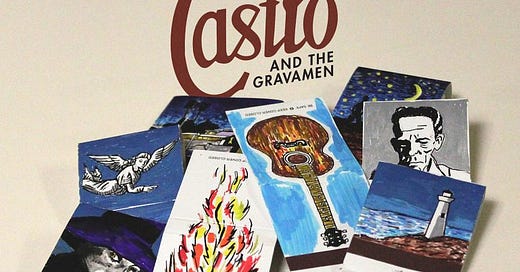



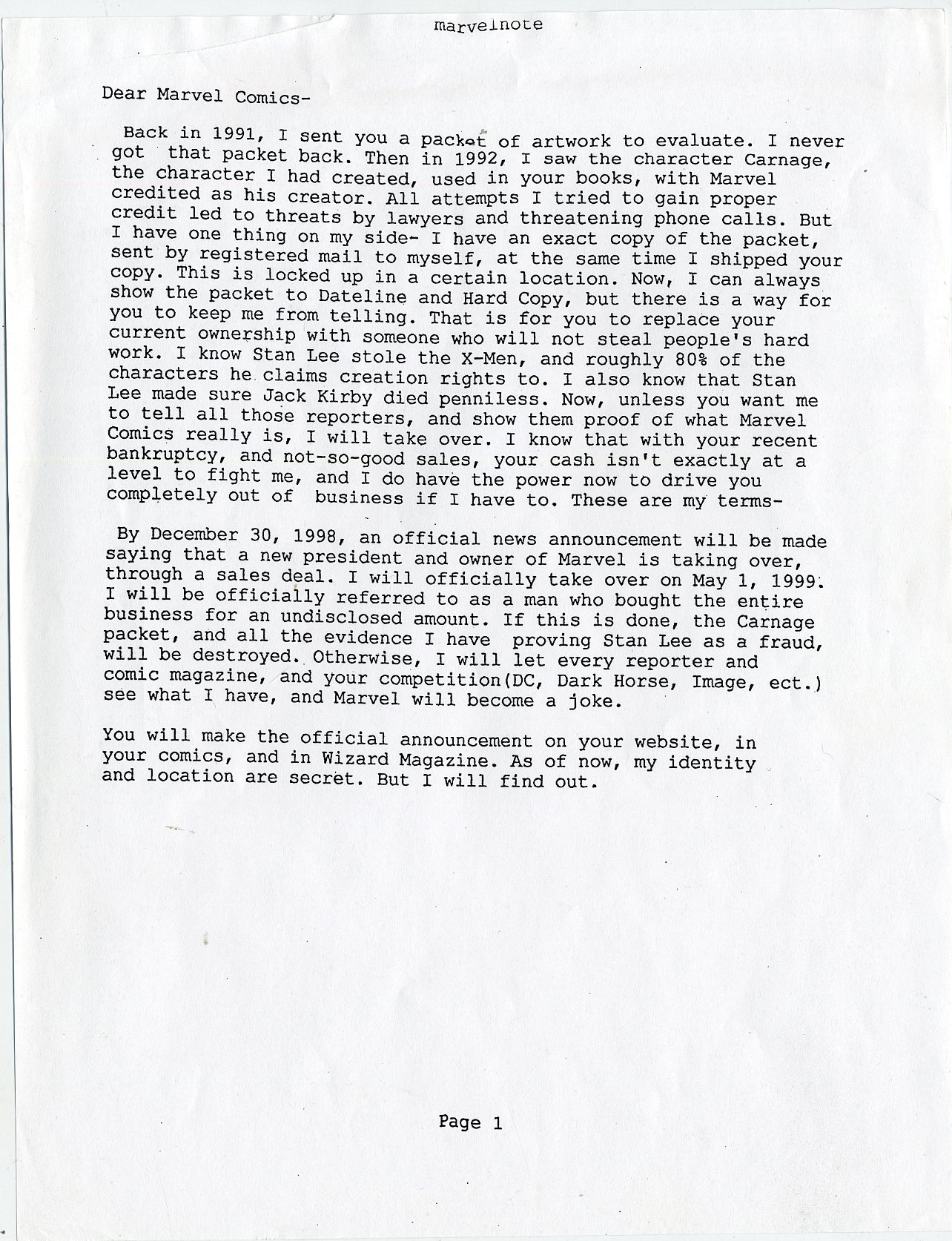
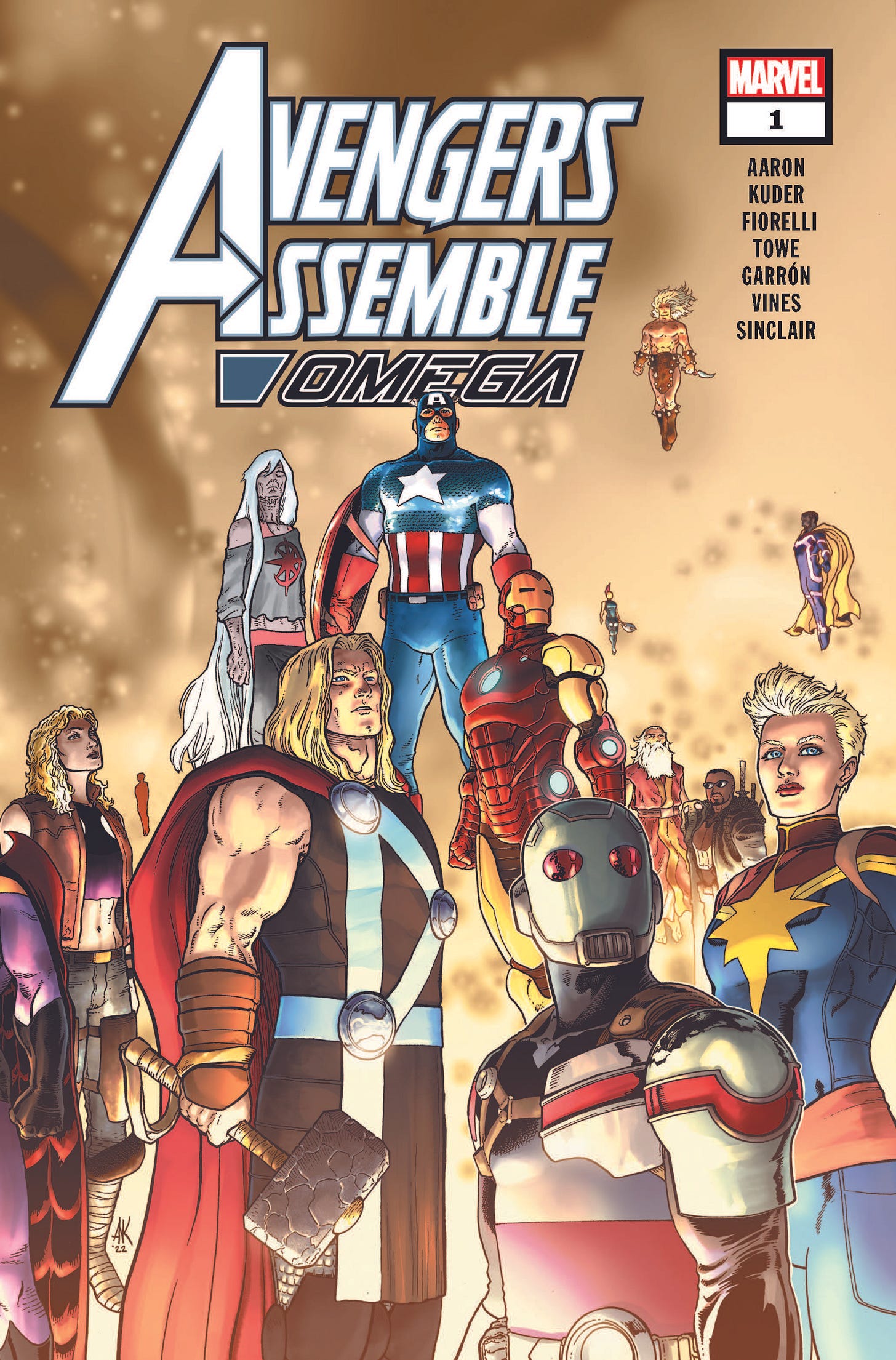
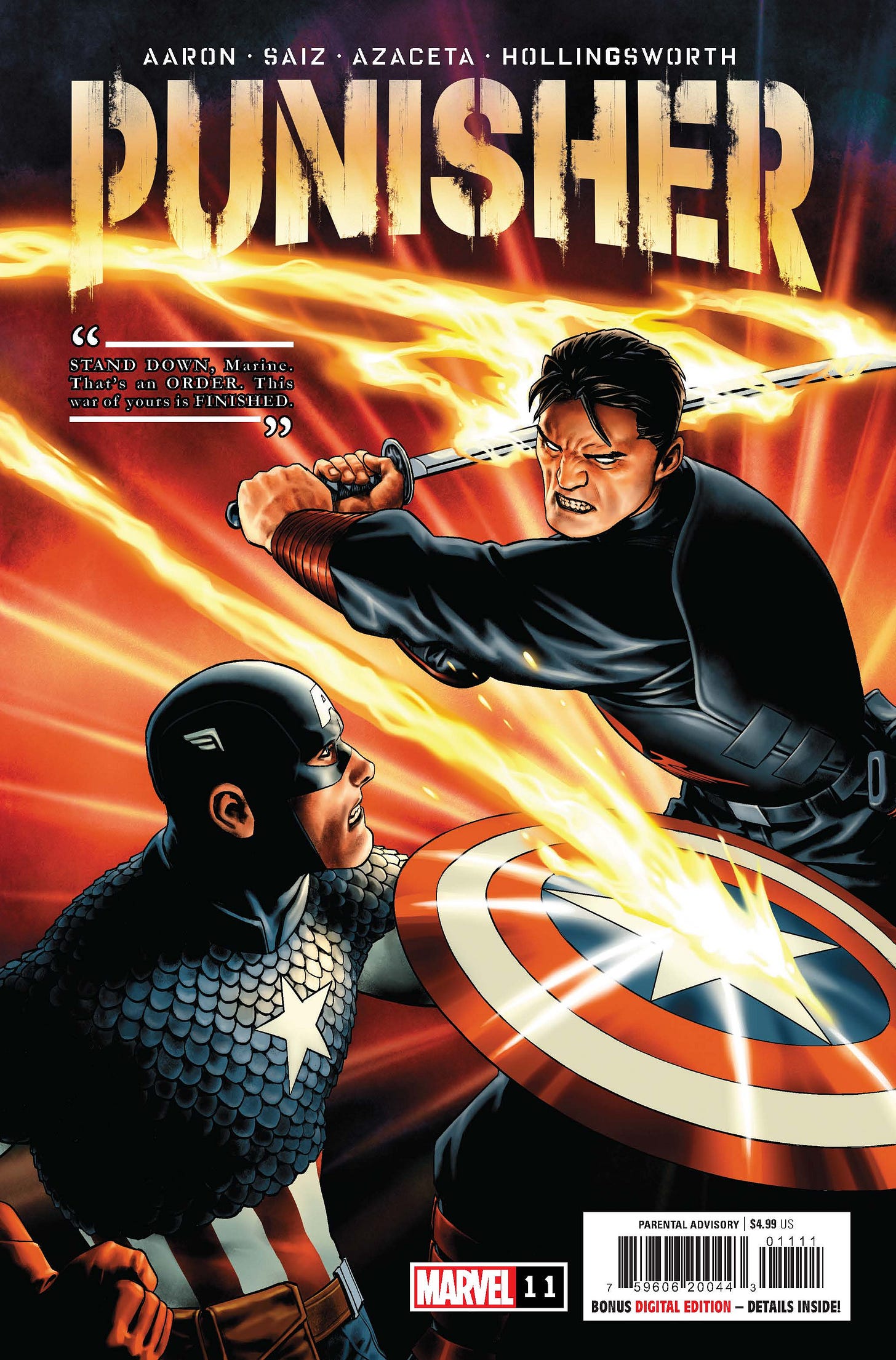
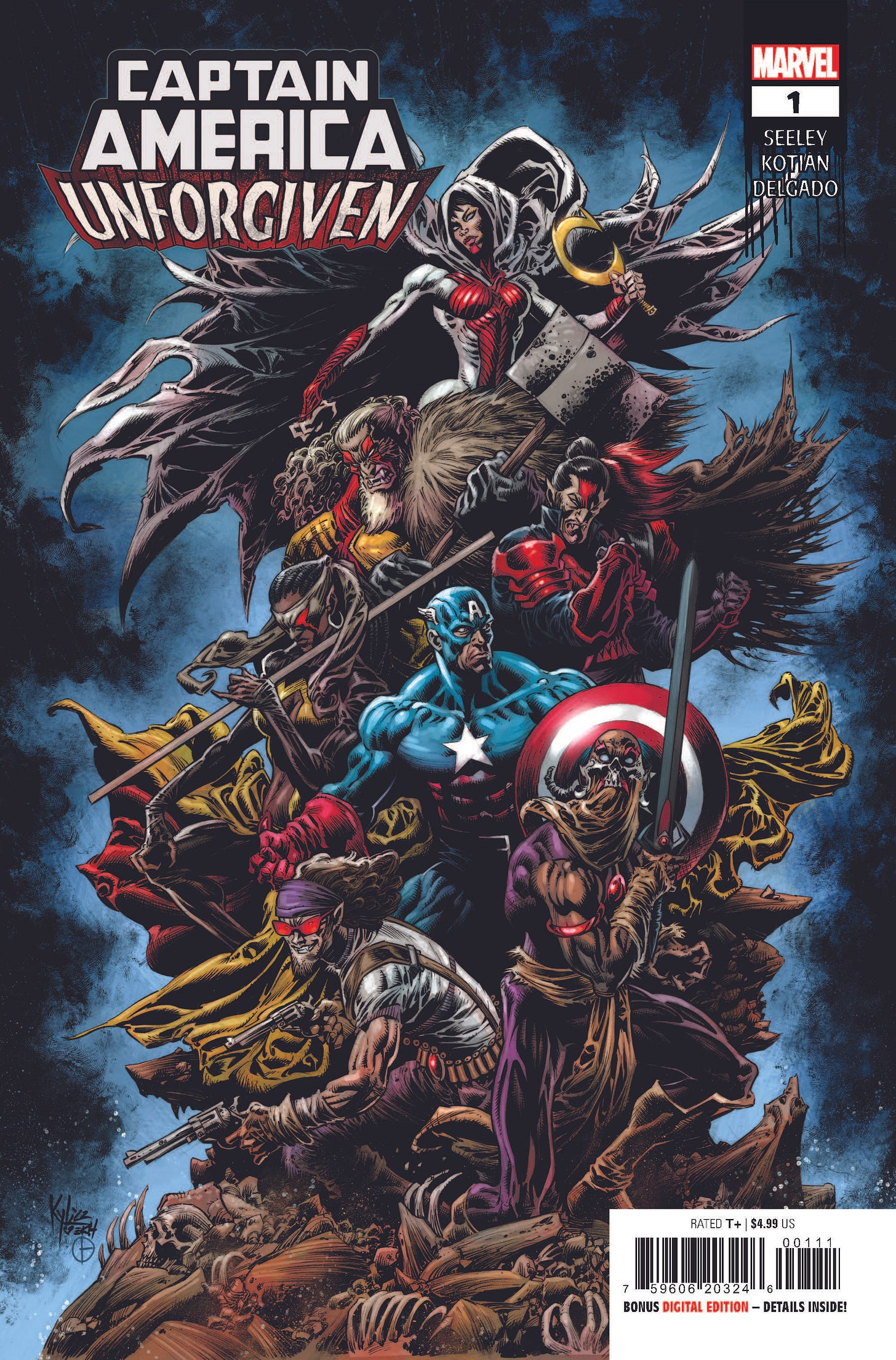
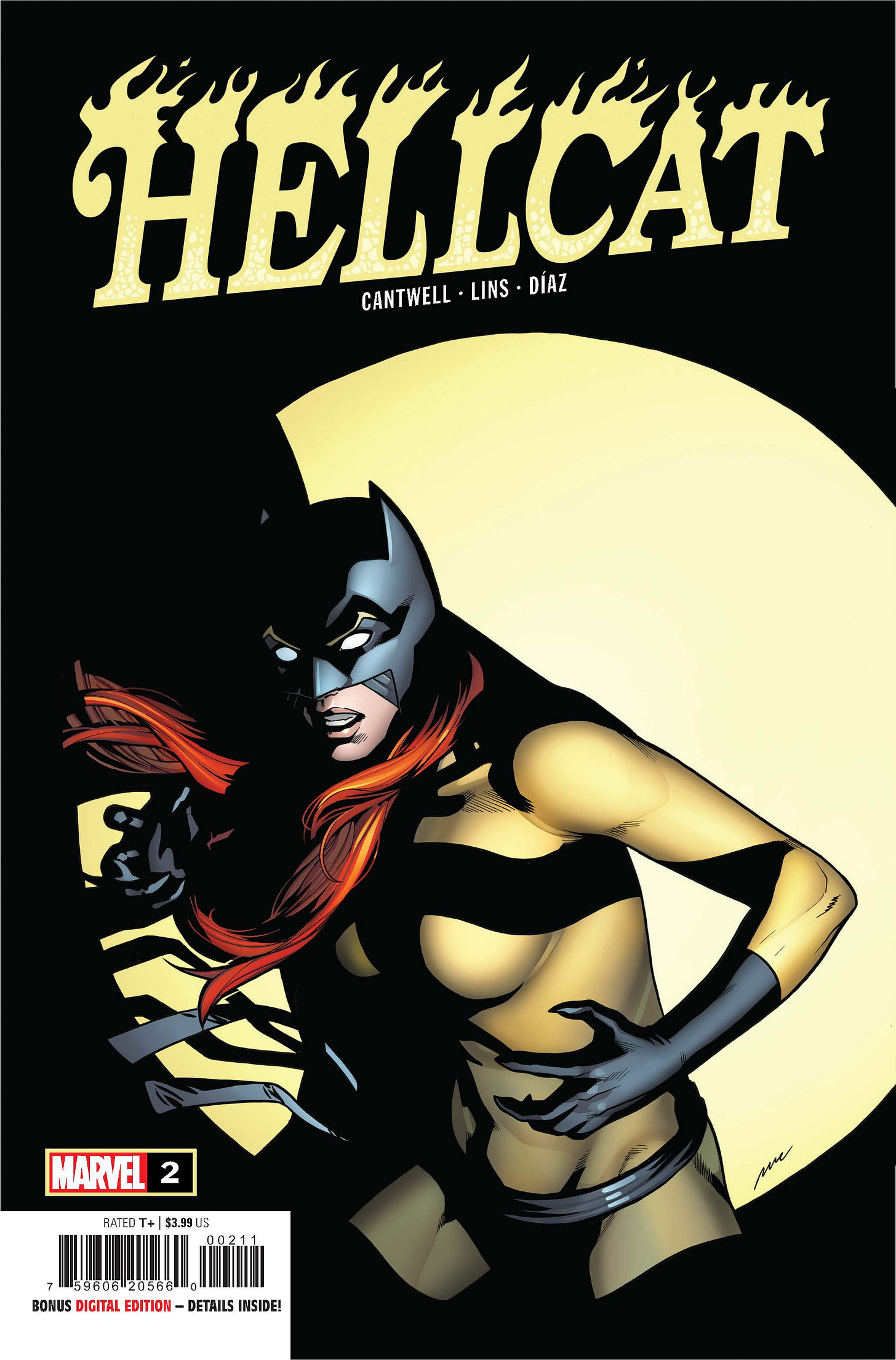


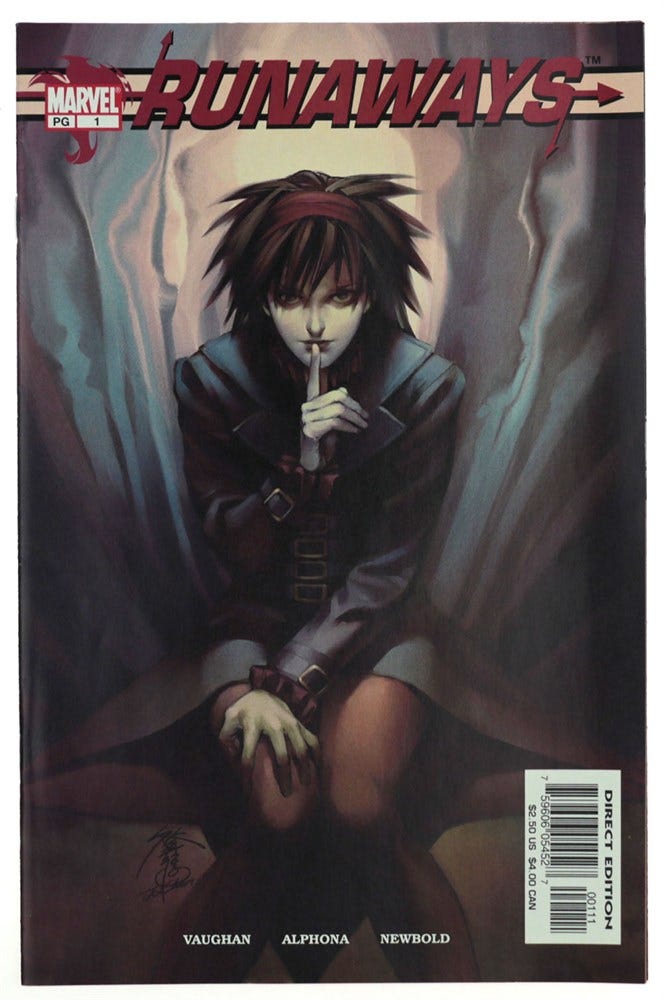
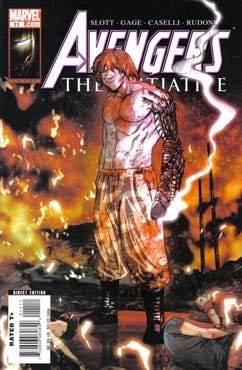
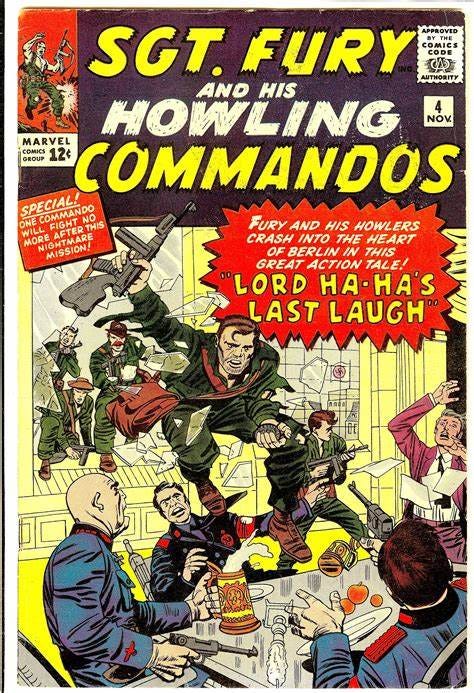
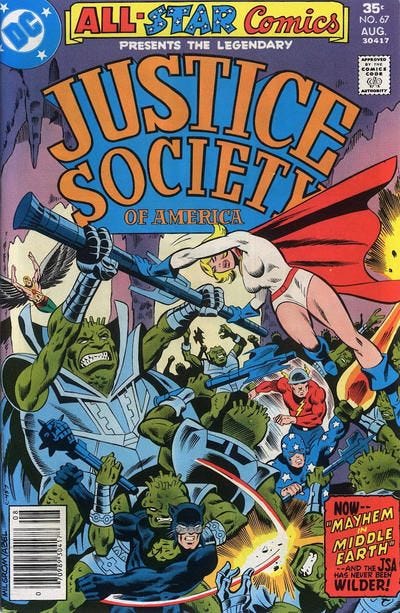
I don't remember anything about pitching "The Many Worlds of Spider-Man" idea. Which doesn't mean it didn't happen, I just don't remember anything about it or my alleged involvement with it.
If it was my idea, I have no doubt it was brilliant. ;)
The breaking the fourth wall thing in comics is always interesting to me as it was such a mainstay of the British humour comics I grew up with in the 70s and 80s. The reader was always the ‘fifth Beatle’ in the strip with many stories in comics like the Beano and the Dandy even going so far as to include the ‘reader’s voice’, speech balloons coming from off-panel as if they were the readers interacting with the characters, sometimes having full conversations with the likes of the British Dennis the Menace or Minnie the Minx.
In many cases this was a smart way of helping with exposition, having the reader ask questions, but in some cases like Bananaman in Nutty and later the Dandy the reader would berate or plain insult the ‘Man of Peel’ for being the world’s worst superhero.
I was really disappointed that when I eventually wrote for the Beano that the reader’s voice balloons had been discontinued. I tried to reintroduce it when I was writing Bananaman but it was vetoed. It was something I always found really funny as a kid.